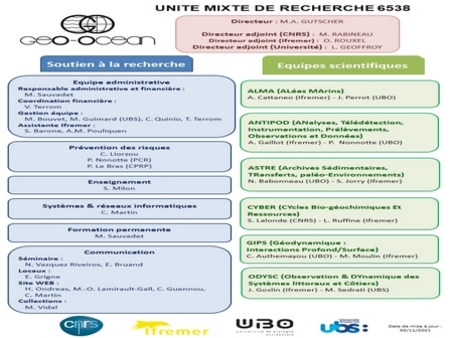Rock Dissection
Rock dissection
The first step is to saw, or slice the rocks into samples. This is done during the day so as not to wake the sleeping ship. The team decides collectively on the rocks to be kept for analysis and those to be kept as archives.
Mathieu, Florian Sandrine choose the best angles at which the rocks should be cut:
- Part of the sample is kept as an archive. Mickaël takes a photo of every sample. Mathieu, Florian and Léa write a brief description for each archive sample. The rocks are left to dry for 24 jours to protect them from humidity and oxygen in the air. Mickaël weighs and stores the samples, ready for final archiving in the rock library CREAM at Ifremer in Brest.
- Small cubes are prepared for analysis, plus a chemical reference cube. Audrey and Sandrine place the cubes in an oven to dry. They are then prepared for preliminary analysis on board and for future analysis back in the lab.
- Mickaël will also prepare small "sugar lump" like samples that will be used for polished and thin sections back in the lab.
Preparing rocks and analysis
Once dry, Audrey et Sandrine crush the cubes with a pestle and mortar. The fragments are then placed in a grinder and reduced to powder. Some of the powder is mixed with wax and compacted with a hydraulic press to produce a pastel-like preparation.
The pastel will be analysed by X-ray fluorescence to obtain an initial estimate of the chemical composition of the samples. Some of the powder will be analysed by X-ray diffraction to determine the mineralogical composition of the samples.







